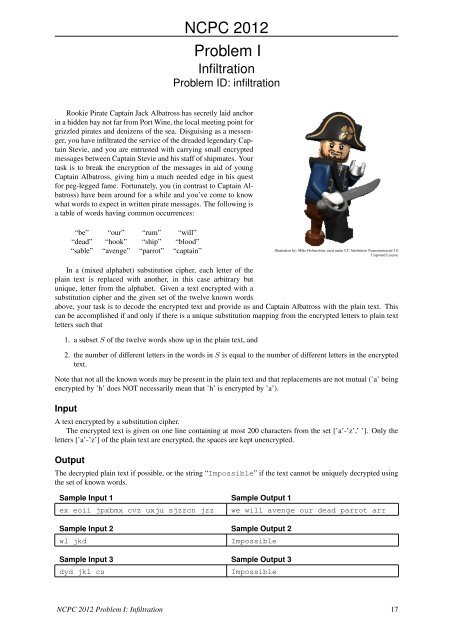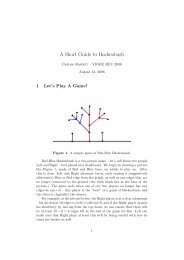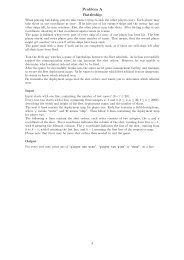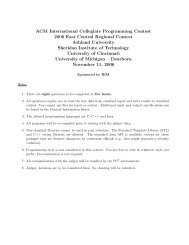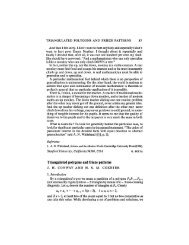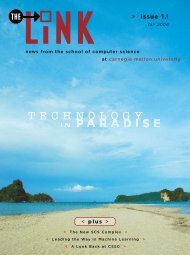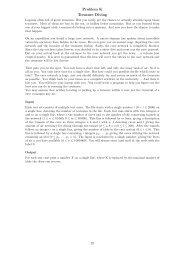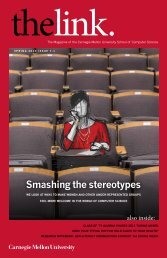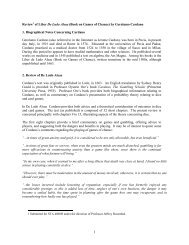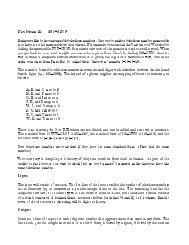Problem A - Nordic Collegiate Programming Contest
Problem A - Nordic Collegiate Programming Contest
Problem A - Nordic Collegiate Programming Contest
Create successful ePaper yourself
Turn your PDF publications into a flip-book with our unique Google optimized e-Paper software.
NCPC 2012<br />
<strong>Problem</strong> I<br />
Infiltration<br />
<strong>Problem</strong> ID: infiltration<br />
Rookie Pirate Captain Jack Albatross has secretly laid anchor<br />
in a hidden bay not far from Port Wine, the local meeting point for<br />
grizzled pirates and denizens of the sea. Disguising as a messenger,<br />
you have infiltrated the service of the dreaded legendary Captain<br />
Stevie, and you are entrusted with carrying small encrypted<br />
messages between Captain Stevie and his staff of shipmates. Your<br />
task is to break the encryption of the messages in aid of young<br />
Captain Albatross, giving him a much needed edge in his quest<br />
for peg-legged fame. Fortunately, you (in contrast to Captain Albatross)<br />
have been around for a while and you’ve come to know<br />
what words to expect in written pirate messages. The following is<br />
a table of words having common occurrences:<br />
“be” “our” “rum” “will”<br />
“dead” “hook” “ship” “blood”<br />
“sable” “avenge” “parrot” “captain”<br />
Illustration by: Mike Holmesfour, used under CC Attribution Noncommercial 3.0<br />
Unported License<br />
In a (mixed alphabet) substitution cipher, each letter of the<br />
plain text is replaced with another, in this case arbitrary but<br />
unique, letter from the alphabet. Given a text encrypted with a<br />
substitution cipher and the given set of the twelve known words<br />
above, your task is to decode the encrypted text and provide us and Captain Albatross with the plain text. This<br />
can be accomplished if and only if there is a unique substitution mapping from the encrypted letters to plain text<br />
letters such that<br />
1. a subset S of the twelve words show up in the plain text, and<br />
2. the number of different letters in the words in S is equal to the number of different letters in the encrypted<br />
text.<br />
Note that not all the known words may be present in the plain text and that replacements are not mutual (’a’ being<br />
encrypted by ’h’ does NOT necessarily mean that ’h’ is encrypted by ’a’).<br />
Input<br />
A text encrypted by a substitution cipher.<br />
The encrypted text is given on one line containing at most 200 characters from the set [’a’-’z’,’ ’]. Only the<br />
letters [’a’-’z’] of the plain text are encrypted, the spaces are kept unencrypted.<br />
Output<br />
The decrypted plain text if possible, or the string “Impossible” if the text cannot be uniquely decrypted using<br />
the set of known words.<br />
Sample Input 1 Sample Output 1<br />
ex eoii jpxbmx cvz uxju sjzzcn jzz<br />
Sample Input 2 Sample Output 2<br />
wl jkd<br />
we will avenge our dead parrot arr<br />
Impossible<br />
Sample Input 3 Sample Output 3<br />
dyd jkl cs<br />
Impossible<br />
NCPC 2012 <strong>Problem</strong> I: Infiltration 17


